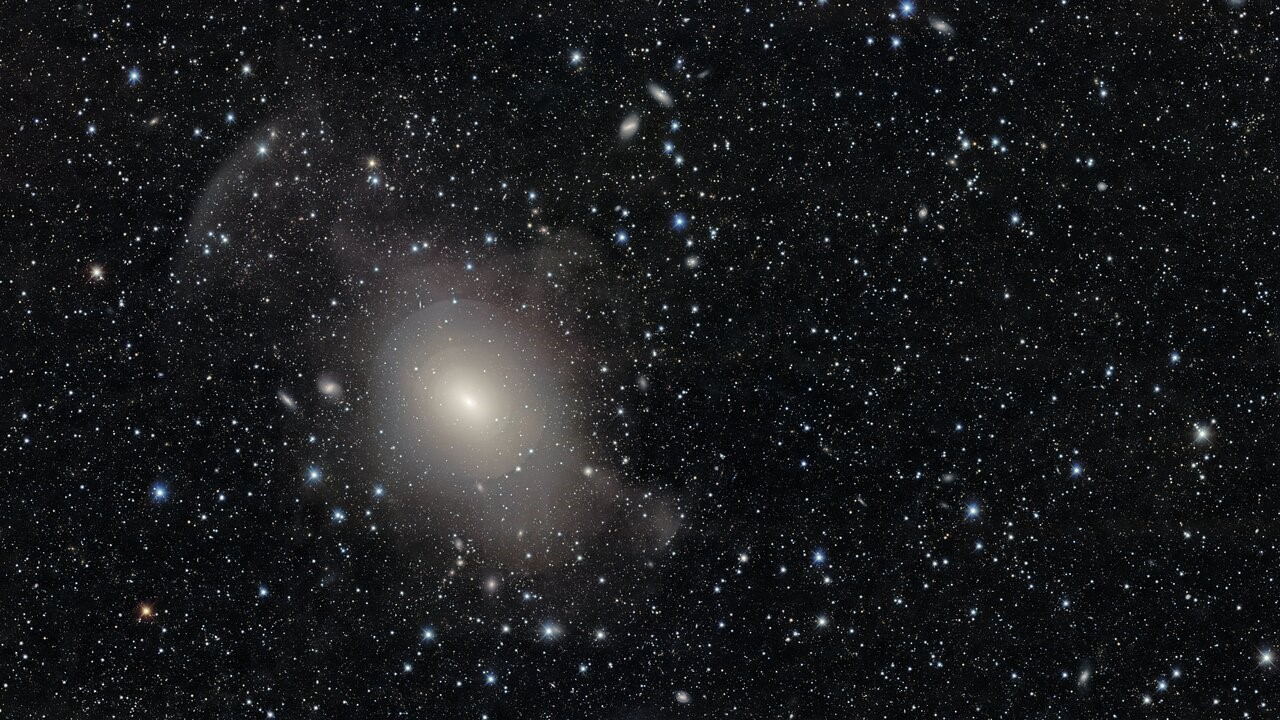Dark Energy Camera peels back layers of 'galactic onion' stretched across space
A new image from the Dark Energy Camera peels back the layers of a “galactic onion” whose shells extend 150,000 light-years across space.

A new image from the Dark Energy Camera peels back the layers of a "galactic onion" whose shells extend 150,000 light-years into space.
Located about 70 million light-years from Earth, the shell galaxy NGC 3923 — a type of elliptical galaxy — was photographed using the US Department of Energy’s (DOE) Dark Energy Camera on the Víctor M. Blanco 4-meter Telescope at the Cerro Tololo Inter-American Observatory in Chile, which is operated by the U.S. National Science Foundation (NSF).
NGC 3923 exhibits symmetrical, onion-like layers that likely formed from a galactic merger, in which a larger galaxy slowly siphoned stars away from the disk of a smaller spiral galaxy. Those stars gradually mixed into the larger galaxy’s halo, forming the resulting combo galaxy's concentric shells, according to a statement from the NSF's NOIRLab.
Related: Amazing photos from Dark Energy Camera in Chile
"The shells of NGC 3923 make the galaxy quite exceptional," officials said in the statement. "Not only does it have the largest known shell of all observed shell galaxies, but it also has the largest number of shells and the largest ratio between the radii of the outermost and innermost shells."
Observations of NGC 3923 suggest it could have as many as 42 shells, in fact, which appear to be more subtle than those of other shell galaxies. Its outermost layers were created first, followed by those closer to the galaxy's core. Spanning 150,000 light-years across, NGC 3923 is about 50% larger than our Milky Way.
"Its shells are also interestingly symmetrical, while other shell galaxies are more skewed," officials said in the statement. "These uncommon features are a sublime example of the unique structures that galaxies can embody depending on their specific evolutionary conditions."
Get the Space.com Newsletter
Breaking space news, the latest updates on rocket launches, skywatching events and more!
The recent Dark Energy Camera image also captures a handful of other galaxies and a large gravitational lens around the galaxy cluster PLCK G287.0+32.9, located near the top of the image. Gravitational lensing occurs when massive objects with powerful gravitational fields bend and magnify light from more distant sources, causing the objects to appear stretched out.
"Gravitational lenses allow astronomers to explore the most profound questions of our Universe, including the nature of dark matter and the value of the Hubble constant, which defines the expansion of the Universe," NOIRLab officials said in the statement.
Join our Space Forums to keep talking space on the latest missions, night sky and more! And if you have a news tip, correction or comment, let us know at: community@space.com.

Samantha Mathewson joined Space.com as an intern in the summer of 2016. She received a B.A. in Journalism and Environmental Science at the University of New Haven, in Connecticut. Previously, her work has been published in Nature World News. When not writing or reading about science, Samantha enjoys traveling to new places and taking photos! You can follow her on Twitter @Sam_Ashley13.









